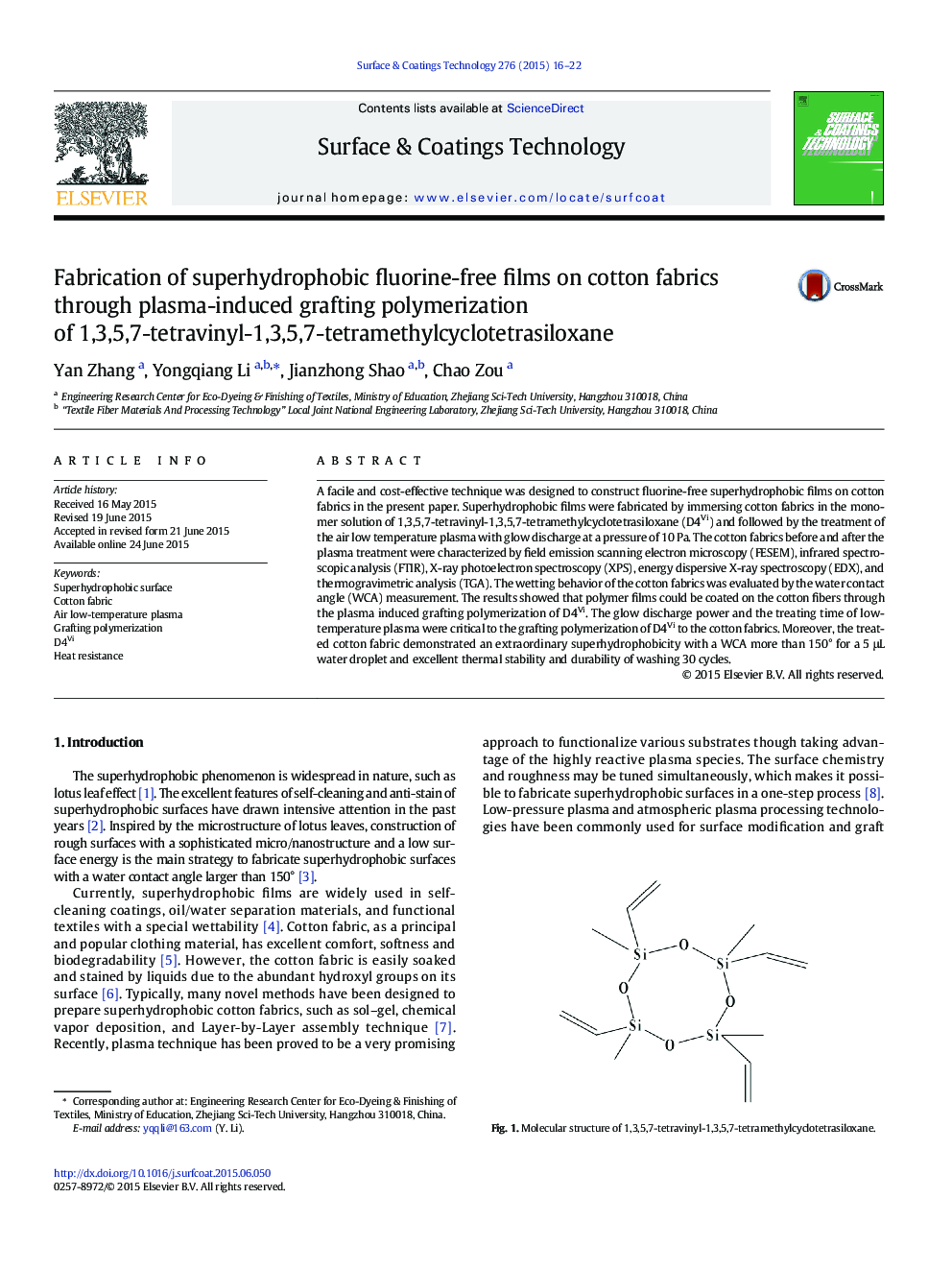| Article ID | Journal | Published Year | Pages | File Type |
|---|---|---|---|---|
| 1656951 | Surface and Coatings Technology | 2015 | 7 Pages |
Abstract
A facile and cost-effective technique was designed to construct fluorine-free superhydrophobic films on cotton fabrics in the present paper. Superhydrophobic films were fabricated by immersing cotton fabrics in the monomer solution of 1,3,5,7-tetravinyl-1,3,5,7-tetramethylcyclotetrasiloxane (D4Vi) and followed by the treatment of the air low temperature plasma with glow discharge at a pressure of 10 Pa. The cotton fabrics before and after the plasma treatment were characterized by field emission scanning electron microscopy (FESEM), infrared spectroscopic analysis (FTIR), X-ray photoelectron spectroscopy (XPS), energy dispersive X-ray spectroscopy (EDX), and thermogravimetric analysis (TGA). The wetting behavior of the cotton fabrics was evaluated by the water contact angle (WCA) measurement. The results showed that polymer films could be coated on the cotton fibers through the plasma induced grafting polymerization of D4Vi. The glow discharge power and the treating time of low-temperature plasma were critical to the grafting polymerization of D4Vi to the cotton fabrics. Moreover, the treated cotton fabric demonstrated an extraordinary superhydrophobicity with a WCA more than 150° for a 5 μL water droplet and excellent thermal stability and durability of washing 30 cycles.
Related Topics
Physical Sciences and Engineering
Materials Science
Nanotechnology
Authors
Yan Zhang, Yongqiang Li, Jianzhong Shao, Chao Zou,
